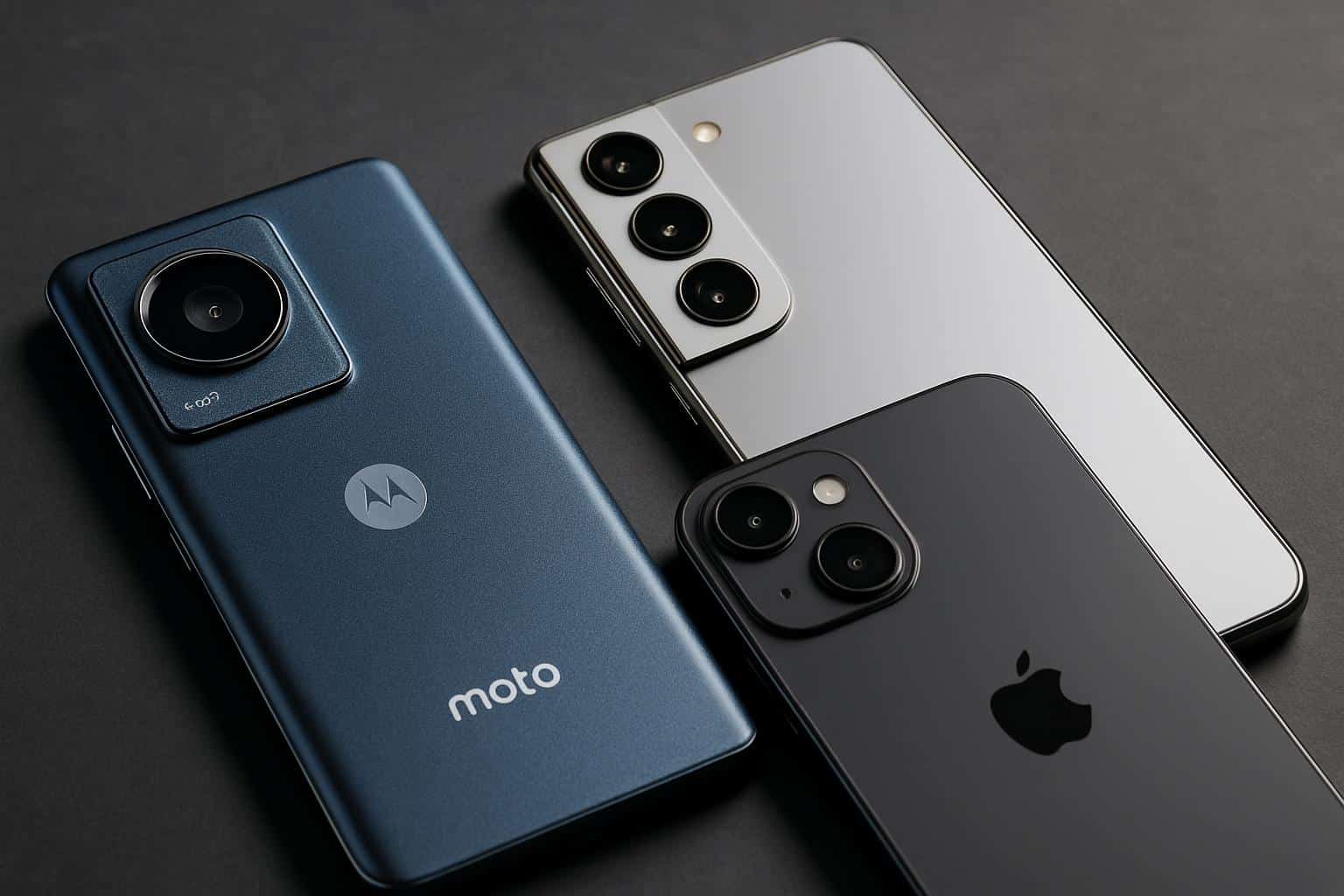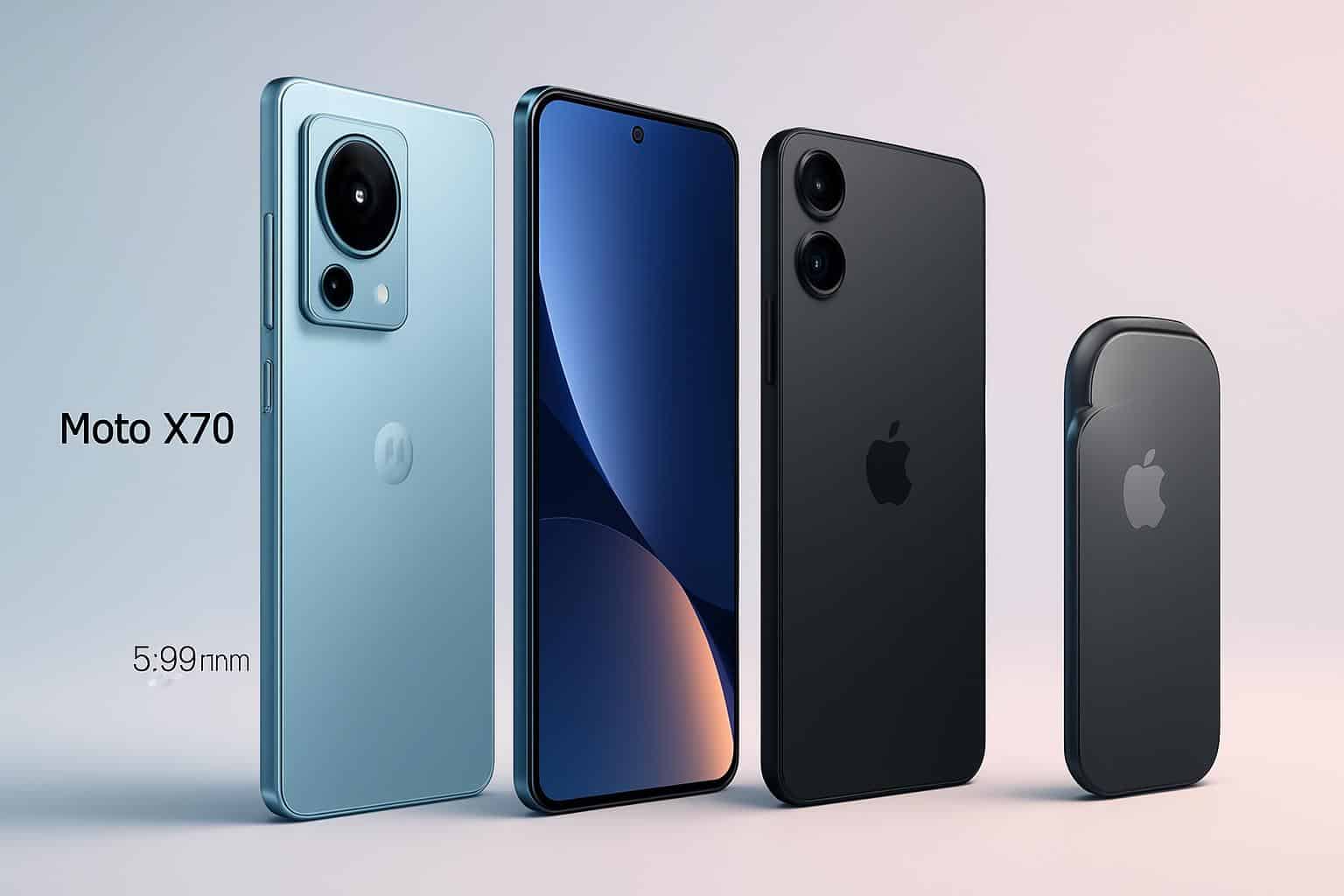Motorola is fully embracing thin-and-light design with its 5.99mm thick Moto X70 Air, a smartphone that has Samsung and Apple’s slimmest offerings squarely in its crosshairs. Debuted in China but tipped to come to international markets as the Motorola Edge 70, its unusual design features a super-thin body encasing an oversized 4,800mAh battery (high-capacity considering its size), high-brightness pOLED display, and mid-range silicon tweaked for power-saving. On paper, it does away with the idea that “ultra-thin” needs to be a compromise between longevity and performance.
Why thin design matters now for modern smartphones
Thin phones never really went away, but the industry shifted toward larger batteries and heavier camera hardware. The pendulum is swinging back. Battery life, charging speed, and ergonomics are continually raised by Counterpoint Research and IDC as among the number one purchase drivers, with manufacturers accommodating slimmer builds to promise all-day use. Motorola’s hedge is to redefine thinness as a practical decision rather than simply a design flex.
- Why thin design matters now for modern smartphones
- Design and durability in an ultra-thin smartphone build
- Display and performance highlights of the Moto X70 Air
- Cameras in a sleek body with focus on consistency
- Battery and charging advantages in an ultra-thin phone
- Software and ecosystem features for cross-device users
- Pricing and the competing stakes in thin premium phones

Design and durability in an ultra-thin smartphone build
- At 5.99mm and about 159g, the Moto X70 Air is substantially thinner and lighter than the majority of flagships, which generally range between 7.6–8.3mm thick.
What’s even more impressive is the IP68 and IP69 ratings—quite unusual for devices this slim—which provide resistance to dust and high-pressure water jets. That’s one level higher than on Samsung’s Galaxy S25 Edge, whose protection was rated as IP68.
The fit and finish is definitely premium. Motorola’s Pantone-validated colors—Gadget Gray, Lily Pad Green, and Bronze Green—are available in matte with complementary camera ring highlights. The slim frame necessarily means there isn’t much space for big heat spreaders and oversized speaker chambers, but Motorola says it’s managed through smart internal packaging and a 3D vapor chamber to deal with thermals.
Display and performance highlights of the Moto X70 Air
The 6.7-inch pOLED display gets you a sharp resolution of 1,220 x 2,712 at a refresh rate of up to 120Hz and supports HDR10+, with a quoted peak brightness up to 4,500 nits and SGS Eye Care certification. That’s high by premium standards and should keep the display visible in harsh sunlight.
Powering the phone is Qualcomm’s Snapdragon 7 Gen 4 coupled with up to 12GB LPDDR5X RAM and up to 512GB UFS 3.1 storage. It’s a middle road decision: enough CPU/GPU overhead for heavy apps while at the same time reining in power draw inside a slim chassis. Motorola’s vapor chamber is there to maintain sustained performance, something that can be a struggle for devices that focus on thin profile.
Cameras in a sleek body with focus on consistency
On the back, you will find a trio of three 50MP sensors that include a primary offering with optical image stabilization and ultrawide and macro/depth duties. For selfies and video calls, there’s a 50MP front camera. Fortunately for the Moto X Pure and its users, recent tuning at Motorola has been leaning toward an accurate color and gentle sharpening approach that certainly isn’t flashy but also avoids share-sheet fireworks in order to keep the consistency of that pleasing output. It’s a different approach to the headline-grabbing 200MP sensor of the Galaxy S25 Edge, but consistency can count for every bit as much in everyday shooting.

Battery and charging advantages in an ultra-thin phone
The most convincing spec is endurance. Despite that slim body, Motorola slips in a 4,800mAh cell—larger than the Galaxy S25 Edge’s 3,900mAh and Apple’s iPhone Air (estimated at around 3,149mAh). Charging is competitive as well: 68W wired and 15W wireless, versus 25W wired on Samsung’s thin flagship and around 25W for Apple’s latest thin model with MagSafe. Real-world results will vary based on software optimization and thermal limits, but the capacity and, more importantly, charging headroom are clear wins on paper.
A larger battery in a thinner body is significant because it adds pressure on rivals. For ultra-thin competitors, those extra 900–1,600mAh can be a convenient buffer that prevents low-battery anxiety for travelers or heavy social users at the end of the day, even with high-refresh screens and camera usage.
Software and ecosystem features for cross-device users
The Moto X70 Air runs almost stock Android 16 skinned by MyUX, complemented with some familiar gestures and light customizations. Motorola also highlights a built-in AI agent and a new Smart Connect for deeper cross-device integration—an area which has been growing in significance (and where Apple is already strong) and which Samsung, thanks to its own AI push, is richly supporting. Motorola’s angle is to broaden its ecosystem by integrating more closely with PCs and tablets, like other industry players.
Pricing and the competing stakes in thin premium phones
The phone will be available in China to start, but we anticipate it will hit the world with a name like Motorola Edge 70. Final pricing is not public, but the strategy is evident: deliver design theater and real stamina at a price that undercuts the thinnest models from Samsung and Apple. According to market trackers like Canalys and IDC, such value-led premium features are “capturing” share in higher mid-tier space—especially in Europe and in parts of Asian territories where Motorola admittedly has been making a name for itself with its line of Edge phones.
If Motorola can hit the right price point, the X70 Air may well redefine what we should expect from skinny phones a long way down the line, without compromising durability or battery life to get there.
That serves as a warning to Samsung, Apple, and other thinists that skinny is back, but this time users will want endurance to match the tight lines.

